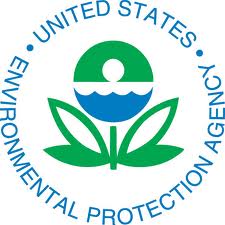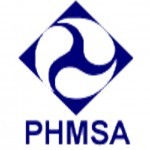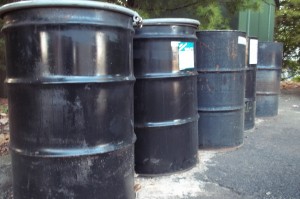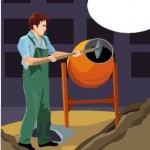On its website the US Government Printing Office makes a wealth of Federal publications available for review and download; one of these is the Federal Register.

Published by the Office of the Federal Register, National Archives and Records Administration (NARA), the Federal Register is the official daily publication for rules, proposed rules, and notices of Federal agencies and organizations, as well as executive orders and other presidential documents.
See below for a brief summary of announcements in the Federal Register by the US EPA on the subject of Hazardous Waste and the Pipeline & Hazardous Materials Safety Administration (PHMSA), Federal Railroad Administration (FRA), and the Federal Aviation Administration (FAA) of the US DOT on the subject of Transportation of Hazardous Materials.
The Federal Register is a great way to look down the road and see potential changes to the regulations long before they are put into effect (sometimes The Rulemaking Process takes years before a final rule is issued, if ever). Knowledge of these potential changes provides you with several advantages:
- Additional time to modify your business operations to comply.
- Awareness of on what topics the regulatory agencies intend to focus their efforts.
- The ability to register your concerns, complaints, suggestions, etc. in order to modify the proposed rule before a final rule is issued. It can be done, really!
- Make changes to your training program to account for changes that become effective before the next training cycle.
- Alert you to the need to re-train your employees prior to their next scheduled training cycle, if necessary.
- Keep you abreast of changes to the regulations that affect your business and/or your industry group.
Please note that this is my best effort to identify the relevant announcements in the Federal Register that may be of interest to generators of hazardous waste and shippers of hazardous materials. I encourage you to review the list of Federal Register publications yourself to ensure regulatory compliance.
January 1, 2015 through January 31, 2015
 USEPA – US Environmental Protection Agency:
USEPA – US Environmental Protection Agency:
Publications not related to the management of hazardous waste, solid waste, universal waste, or used oil are not included here.
Rules and Regulations:
Definition of Solid Waste Pages 1693 – 1814 [FR DOC # 2014-30382] PDF | Text | More
Georgia: Final Authorization of State Hazardous Waste Management Program Revisions Pages 3888 – 3891 [FR DOC # 2015-01040] PDF | Text | More
Proposed Rules:
Lead-Based Paint Programs; Amendment to Jurisdiction-Specific Certification and Accreditation Requirements and Renovator Refresher Training Requirements Pages 1873 – 1880 [FR DOC # 2015-00473] PDF | Text | More
Is the waste generated during lead-based paint removal from a home a hazardous waste? Find out here: The Household Hazardous Waste Exclusion
Georgia: Final Authorization of State Hazardous Waste Management Program Revisions Pages 3936 – 3936 [FR DOC # 2015-01039] PDF | Text | More
Contact me with any questions you may have about the management of hazardous waste Daniels Training Services 815.821.1550 |
Notices:
None
FAA – Federal Aviation Administration:
Publications not related to the transportation of hazardous materials are not included here.
Rules and Regulations:
None
Proposed Rules:
None
Notices:
None
FMCSA – Federal Motor Carrier Safety Administration:
Publications not related to the transportation of hazardous materials are not included here.
Rules and Regulations:
None
Proposed Rules:
None
Notices:
None
FRA – Federal Railroad Administration:
Publications not related to the transportation of hazardous materials are not included here.
Rules and Regulations:
None
Proposed Rules:
None
Notices:
Petition for Waiver of Compliance Pages 1469 – 1470 [FR DOC # 2015-00114] PDF | Text | More
 PHMSA – Pipeline and Hazardous Materials Safety Administration:
PHMSA – Pipeline and Hazardous Materials Safety Administration:
Publications not related to the transportation of hazardous materials are not included here.
Rules and Regulations:
Hazardous Materials: Harmonization With International Standards (RRR) Pages 1075 – 1169 [FR DOC # 2014-30462] PDF | Text | More
Proposed Rules:
Hazardous Materials: Miscellaneous Amendments (RRR) Pages 3787 – 3838 [FR DOC # 2015-00265] PDF | Text | More
Hazardous Materials: Adoption of Special Permits (MAP-21) (RRR) Pages 5339 – 5449 [FR DOC # 2015-01263] PDF | Text | More
Notices:
Delayed Applications Pages 105 – 106 [FR DOC # 2014-30557] PDF | Text | More
Notice of Application for Special Permits Pages 104 – 105 [FR DOC # 2014-30538] PDF | Text | More
Notice of Application for Modification of Special Permit Pages 275 – 276 [FR DOC # 2014-30550] PDF | Text | More
Actions on Special Permit Applications Pages 920 – 921 [FR DOC # 2014-30546] PDF | Text | More
Delayed Applications Pages 2777 – 2778 [FR DOC # 2015-00707] PDF | Text | More
Notice of Application for Special Permits Pages 2778 – 2779 [FR DOC # 2015-00706] PDF | Text | More
Notice of Application for Modification of Special Permit Pages 3012 – 3013 [FR DOC # 2015-00705] PDF | Text | More
Actions on Special Permit Applications Pages 3311 – 3312 [FR DOC # 2015-00678] PDF | Text | More
Information can be helpful but it’s useless if you are not able to make sense of it. You must be able to determine how any changes to the rules and regulations (final or proposed) will affect your operations, and communicate the necessary information to your personnel. I can help you to do that.
Contact me with any questions you may have about the transportation of hazardous materials by air, highway, vessel, or rail International and Domestic Daniels Training Services 815.821.1550 |
Please contact me for a free training consultation to determine your regulatory requirements and how training can help you to attain and maintain compliance with the regulations of the US Environmental Protection Agency (and your state) and the PHMSA, FAA, FRA, & FMCSA of the US Department Of Transportation.








